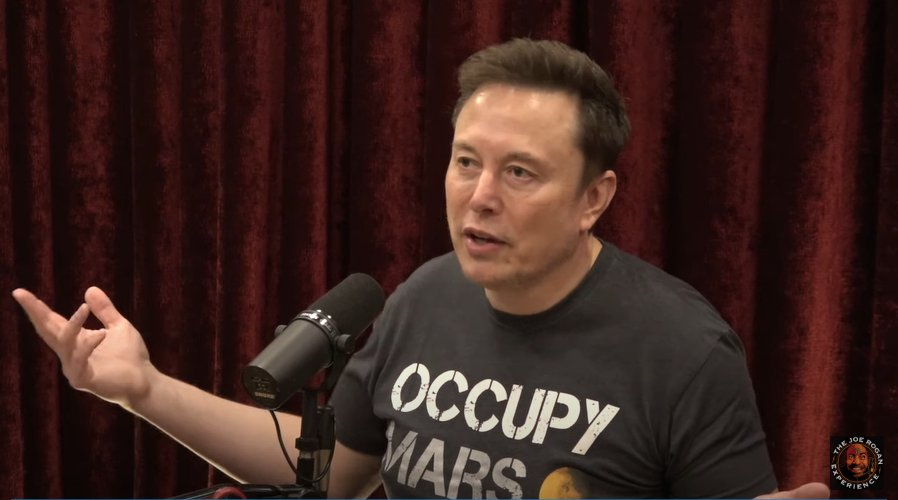In a bold announcement, tech billionaire Elon Musk has revealed that SpaceX’s Starship is slated for a groundbreaking mission to Mars by the end of 2026. This ambitious journey will carry Tesla’s humanoid robot, Optimus, and if everything proceeds as planned, human exploration of the red planet could commence as early as 2029, although a more realistic timeframe has been suggested for 2031. The mission has been met with excitement and skepticism, sparking conversations about the feasibility of interplanetary travel and its implications for humanity.
| Article Subheadings |
|---|
| 1) Overview of the Mars Mission Plans |
| 2) The Role of Tesla’s Humanoid Robot |
| 3) Timeline and Expectations for Mars Colonization |
| 4) Reactions from the Space Community |
| 5) Future Implications of Space Exploration |
Overview of the Mars Mission Plans
The recent announcement regarding the SpaceX Mars mission marks a pivotal moment in the history of space exploration. Elon Musk, known for his visionary goals, outlined a comprehensive plan to utilize the Starship, described as the world’s most powerful launch vehicle. Capable of transporting 150 metric tonnes of cargo in a fully reusable manner, the Starship’s design reflects a commitment to sustainability in space travel. Musk commented on the mission’s significance, stating,
“I can’t think of anything more exciting than going out there and being among the stars.”
This statement encapsulates the drive behind the mission: making humanity a multiplanetary species.
The Role of Tesla’s Humanoid Robot
A unique feature of the upcoming Mars expedition is the inclusion of Optimus, Tesla’s humanoid robot. This innovative creation was designed to perform tasks that could assist human crew members in the challenging Martian environment. The potential applications range from conducting scientific experiments to maintaining equipment and other logistical tasks that require consistency and precision. The decision to send a robot on such a crucial mission indicates the high level of trust and integration of artificial intelligence in future space explorations.
Timeline and Expectations for Mars Colonization
Musk’s timeline for reaching Mars has raised eyebrows within the scientific community. With initial missions proposed for the end of 2026, the timeline suggests an ambitious three-year lead time to prepare for potential human landings in 2029. This initial target, however, has some industry experts wary, with many believing 2031 to be a more plausible estimate. The timeframe will require rigorous testing and successful trial runs of Starship to ensure both the safety and viability of missions beyond Earth. These timelines hinge on ongoing technological developments and regulatory approvals, both of which have historically faced delays.
Reactions from the Space Community
The announcement has ignited a mixed bag of reactions among scientists, space enthusiasts, and policymakers. Some former astronauts and space experts have hailed the plans as an “impressive technological tour de force,” applauding Musk’s aggressive vision for promoting space travel. Others express skepticism regarding the feasibility of the ambitious timelines proposed. Critics have pointed out the complexity and risks associated with sending humans to Mars, advocating for more time to conduct thorough research and development to ensure crew safety. After all, the safety of astronauts must be the priority in such high-stakes missions.
Future Implications of Space Exploration
If successful, Musk’s vision could have far-reaching implications for humanity’s future. Establishing a human presence on Mars not only symbolizes technological prowess but also raises questions about sustainability and the long-term survival of the human race. Exploring how to utilize Martian resources and habitats could provide insights into solving challenges faced on Earth, such as climate change or resource scarcity. Moreover, as countries and private companies like SpaceX gear up for potential colonization, collaboration with international space agencies could pave the way for future missions, fostering a unified approach to space exploration.
| No. | Key Points |
|---|---|
| 1 | SpaceX plans to send a crewed mission to Mars by 2026. |
| 2 | Optimus, Tesla’s humanoid robot, will accompany the mission. |
| 3 | Musk predicts humans could land on Mars by 2029, with 2031 being more likely. |
| 4 | The announcement has drawn mixed reactions from the space community. |
| 5 | The success of Mars missions could impact future international space collaboration. |
Summary
The announcement of SpaceX’s Mars mission is a landmark moment in space exploration, highlighting both the ambitious goals set by Elon Musk and the potential for revolutionary advancements in technology and human capability. As the project unfolds, it promises to redefine humanity’s relationship with space and could set the stage for future endeavors beyond Earth. The intricacies of preparing for such an unprecedented expedition require careful planning and innovation, challenging scientists and engineers to overcome barriers for the potential benefits that lie ahead.
Frequently Asked Questions
Question: What is SpaceX’s goal for the Mars mission?
SpaceX aims to send humans to Mars by 2026, with potential landings projected for 2029, for the purpose of establishing a sustainable human presence on the planet.
Question: What role will the Optimus robot play in the Mars mission?
Optimus, Tesla’s humanoid robot, is designed to assist human crew members by performing various tasks on Martian missions, such as conducting experiments and maintaining equipment.
Question: Why is the timeline for Mars colonization considered ambitious?
The timeline is deemed ambitious due to the technological and regulatory challenges that must be addressed, as well as the critical need for extensive testing and validation of the spacecraft before attempting human missions.


